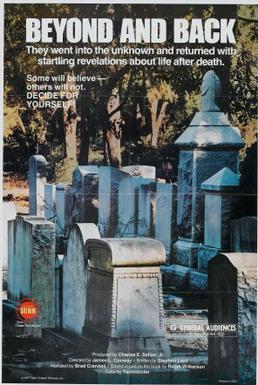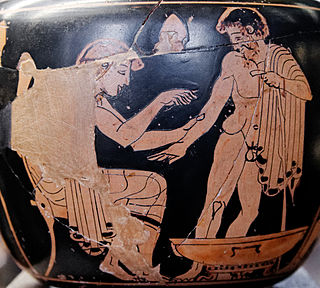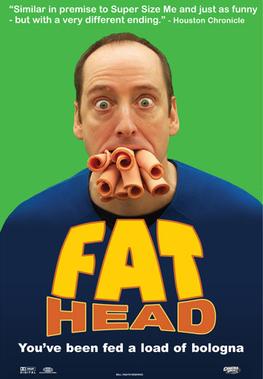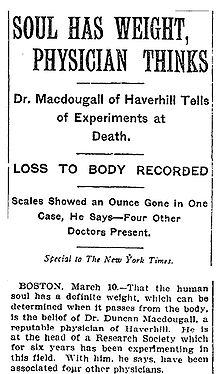
Parapsychology is the study of alleged psychic phenomena and other paranormal claims, for example, those related to near-death experiences, synchronicity, apparitional experiences, etc. Criticized as being a pseudoscience, the majority of mainstream scientists reject it. Parapsychology has also been criticised by mainstream critics for claims by many of its practitioners that their studies are plausible despite a lack of convincing evidence after more than a century of research for the existence of any psychic phenomena.

In many religious and philosophical traditions, the soul is the non-material essence of a person, which includes one's identity, personality, and memories, an immaterial aspect or essence of a living being that is believed to be able to survive physical death. The concept of the soul is generally applied to humans, though it can also be applied to other living or even non-living entities, as in animism.

An experiment is a procedure carried out to support or refute a hypothesis, or determine the efficacy or likelihood of something previously untried. Experiments provide insight into cause-and-effect by demonstrating what outcome occurs when a particular factor is manipulated. Experiments vary greatly in goal and scale but always rely on repeatable procedure and logical analysis of the results. There also exist natural experimental studies.

Alfred Rupert Sheldrake is an English author and parapsychology researcher. He proposed the concept of morphic resonance, a conjecture that lacks mainstream acceptance and has been widely criticized as pseudoscience. He has worked as a biochemist at Cambridge University, a Harvard scholar, a researcher at the Royal Society, and a plant physiologist for ICRISAT in India.

Jean Servais Stas was a Belgian analytical chemist who co-discovered the atomic weight of carbon.

Jan Baptist van Helmont was a chemist, physiologist, and physician from Brussels. He worked during the years just after Paracelsus and the rise of iatrochemistry, and is sometimes considered to be "the founder of pneumatic chemistry". Van Helmont is remembered today largely for his 5-year willow tree experiment, his introduction of the word "gas" into the vocabulary of science, and his ideas on spontaneous generation.

21 Grams is a 2003 American psychological drama film directed by Alejandro González Iñárritu from a screenplay by Guillermo Arriaga, based on a story by Arriaga and Iñárritu. The film stars Sean Penn, Naomi Watts, Charlotte Gainsbourg, Danny Huston and Benicio Del Toro. The second part of Arriaga's and Iñárritu's "Trilogy of Death", preceded by Amores perros (2000) and followed by Babel (2006), 21 Grams interweaves several plot lines in a nonlinear arrangement.

In Scientology, the concept of the thetan is similar to the concept of self, or the spirit or soul as found in several belief systems. The term is derived from the Greek letter Θ, theta, which in Scientology beliefs represents "the source of life, or life itself." In Scientology it is believed that it is the thetan, not the central nervous system, which commands the body.

Aminoglycoside is a medicinal and bacteriologic category of traditional Gram-negative antibacterial medications that inhibit protein synthesis and contain as a portion of the molecule an amino-modified glycoside (sugar). The term can also refer more generally to any organic molecule that contains amino sugar substructures. Aminoglycoside antibiotics display bactericidal activity against Gram-negative aerobes and some anaerobic bacilli where resistance has not yet arisen but generally not against Gram-positive and anaerobic Gram-negative bacteria.

Johannes Andreas Grib Fibiger was a Danish physician and professor of anatomical pathology at the University of Copenhagen. He was the recipient of the 1926 Nobel Prize in Physiology or Medicine "for his discovery of the Spiroptera carcinoma". He demonstrated that the roundworm which he called Spiroptera carcinoma could cause stomach cancer in rats and mice. His experimental results were later proven to be a case of mistaken conclusion. Erling Norrby, who had served as the Permanent Secretary of the Royal Swedish Academy of Sciences and Professor and Chairman of Virology at the Karolinska Institute, declared Fibiger's Nobel Prize as "one of the biggest blunders made by the Karolinska Institute."
The Physicians Committee for Responsible Medicine (PCRM) is a non-profit research and advocacy organization based in Washington, D.C. According to Charity Navigator, the organization works for "compassionate and effective medical practice, research, and health promotion."

Clan MacDougall is a Highland Scottish clan, historically based in and around Argyll. The Lord Lyon King of Arms, the Scottish official with responsibility for regulating heraldry in Scotland, issuing new grants of coats of arms, and serving as the judge of the Court of the Lord Lyon, recognizes under Scottish law the Chief of Clan MacDougall. The MacDougall chiefs share a common ancestry with the chiefs of Clan Donald in descent from Somerled of the 12th century. In the 13th century the Clan MacDougall whose chiefs were the original Lords of Argyll and later Lords of Lorne was the most powerful clan in the Western Highlands. During the Wars of Scottish Independence the MacDougalls sided with the Clan Comyn whose chiefs rivaled Robert the Bruce for the Scottish Crown and this resulted in clan battles between the MacDougalls and Bruce. This marked the MacDougall's fall from power and led to the rise of their relatives, the Clan Donald, who had supported Bruce and also the rise to power of the Clan Campbell who were then the habitual enemies of the MacDougalls and later of Clan Donald.

Beyond and Back is a 1978 American documentary/"death-sploitation flick" produced and distributed by Sunn Classic Pictures that deals with the subject of near death experiences.

Ancient Greek medicine was a compilation of theories and practices that were constantly expanding through new ideologies and trials. The Greek term for medicine was iatrikē. Many components were considered in ancient Greek medicine, intertwining the spiritual with the physical. Specifically, the ancient Greeks believed health was affected by the humors, geographic location, social class, diet, trauma, beliefs, and mindset. Early on the ancient Greeks believed that illnesses were "divine punishments" and that healing was a "gift from the Gods". As trials continued wherein theories were tested against symptoms and results, the pure spiritual beliefs regarding "punishments" and "gifts" were replaced with a foundation based in the physical, i.e., cause and effect.

Jean-Baptiste Denys was a French physician notable for having performed the first fully documented human blood transfusion, a xenotransfusion. He studied in Montpellier and was the personal physician to King Louis XIV.

The Brown Dog affair was a political controversy about vivisection that raged in Britain from 1903 until 1910. It involved the infiltration of University of London medical lectures by Swedish feminists, battles between medical students and the police, police protection for the statue of a dog, a libel trial at the Royal Courts of Justice, and the establishment of a Royal Commission to investigate the use of animals in experiments. The affair became a cause célèbre that divided the country.

Cats & Dogs: The Revenge of Kitty Galore is a 2010 spy comedy film directed by Brad Peyton in his directorial debut, produced by Andrew Lazar, Polly Johnsen, Greg Michael and Brent O'Connor and written by Ron J. Friedman and Steve Bencich based on the characters by John Requa and Glenn Ficarra. The film stars Chris O'Donnell and Jack McBrayer with an ensemble voice cast of James Marsden, Nick Nolte, Christina Applegate, Katt Williams, Bette Midler, Neil Patrick Harris, Sean Hayes, Joe Pantoliano, Michael Clarke Duncan, Wallace Shawn and Roger Moore. The film is a stand-alone sequel to the 2001 film Cats & Dogs, with more emphasis on its animal characters than the previous film, and was released on July 30, 2010, by Warner Bros. Pictures. It received mostly negative reviews from film critics and grossed $112.5 million on an $85 million budget.

Fat Head is a 2009 American documentary film directed by and starring comedian and health writer Tom Naughton. The film seeks to refute both the documentary Super Size Me and the lipid hypothesis, a theory of nutrition started in the early 1950s in the United States by Ancel Keys and promoted in much of the Western world.
The Rice Diet started as a radical treatment for malignant hypertension before the advent of antihypertensive drugs; the original diet included strict dietary restriction and hospitalization for monitoring. Some contemporary versions have been greatly relaxed, and have been described as fad diets.
The history of experimental research is long and varied. Indeed, the definition of an experiment itself has changed in responses to changing norms and practices within particular fields of study. This article documents the history and development of experimental research from its origins in Galileo's study of gravity into the diversely applied method in use today.


















